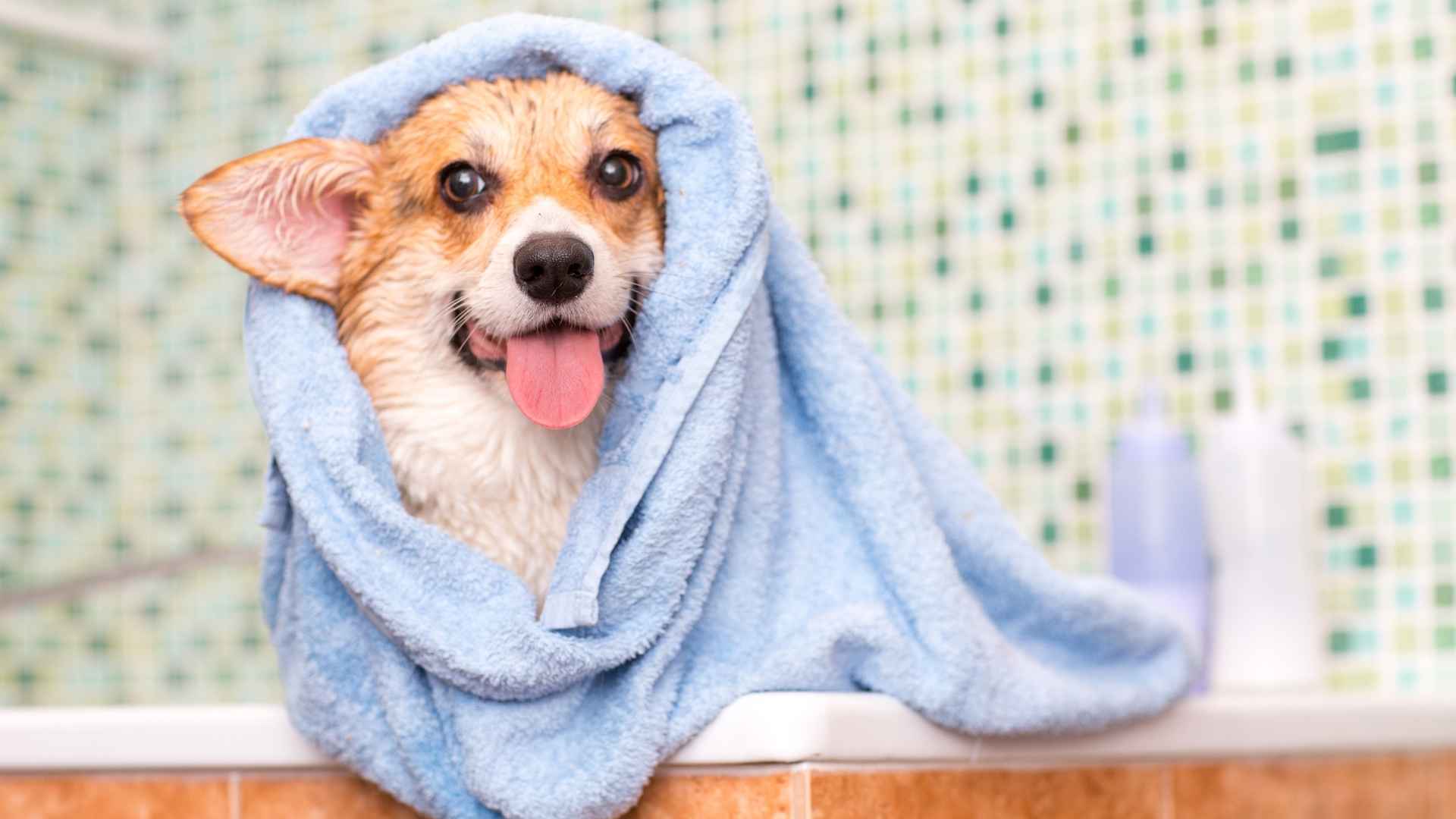Ever wonder why some dogs bolt at the sound of running water, while others step into the tub without hesitation? Bath time can be a stressful chore or a calm routine, depending largely on the dog. While many breeds are wary of water, there are those that handle it with surprising ease.
Some dogs have a natural tolerance for water, whether it’s standing in a tub, getting rinsed off, or being gently scrubbed. Their body language stays relaxed, and they’re far less likely to resist or panic. This can make routine bathing much simpler for owners and more comfortable for the dog.
Breed history, coat type, and overall temperament all influence how a dog responds to being bathed. Breeds developed for water work or with calm, trusting dispositions tend to manage bath time without much trouble.
If easy grooming and minimal fuss during bath time are priorities, these dog breeds are among the most cooperative when it’s time to get clean.
Dog Breeds That Love Bath Time
1. Portuguese Water Dog
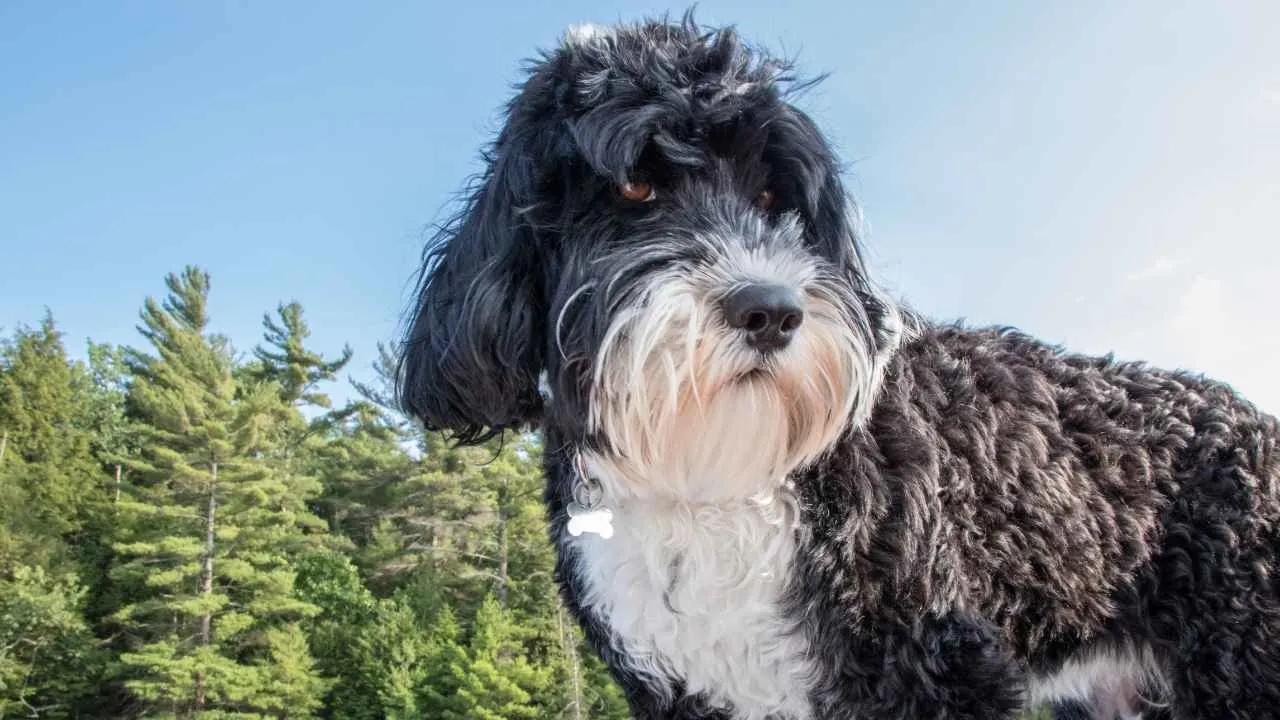
Key Roles: Originally bred to herd fish into nets, retrieve lost tackle, and serve as couriers between ships and shore along Portugal’s coastline.
This breed’s stamina on the water is hard to match. With webbed feet and a thick, waterproof coat, the Portuguese Water Dog was built to swim for long distances and brave cold Atlantic waters. Their utility as seafaring assistants made them indispensable to Portuguese fishermen for centuries.
The breed’s love of activity doesn’t end at the shoreline. Whether they’re running, hiking, or splashing in a stream, Porties are happiest when both their body and mind are occupied. Their enthusiasm for play is matched by their capacity to learn complex tasks, from agility drills to scent games.
In the bath, their confidence around water translates to calm cooperation. Many will stand patiently while being rinsed and scrubbed, especially if bath time is kept low-pressure and playful. They may even hop in voluntarily, viewing it as just another kind of aquatic adventure.
According to PetMD, Portuguese Water Dogs form strong bonds with their people and tend to follow them closely. This affection, combined with their working background, means they do best with families who can match their energy and provide regular engagement, both on land and in water.
2. American Water Spaniel
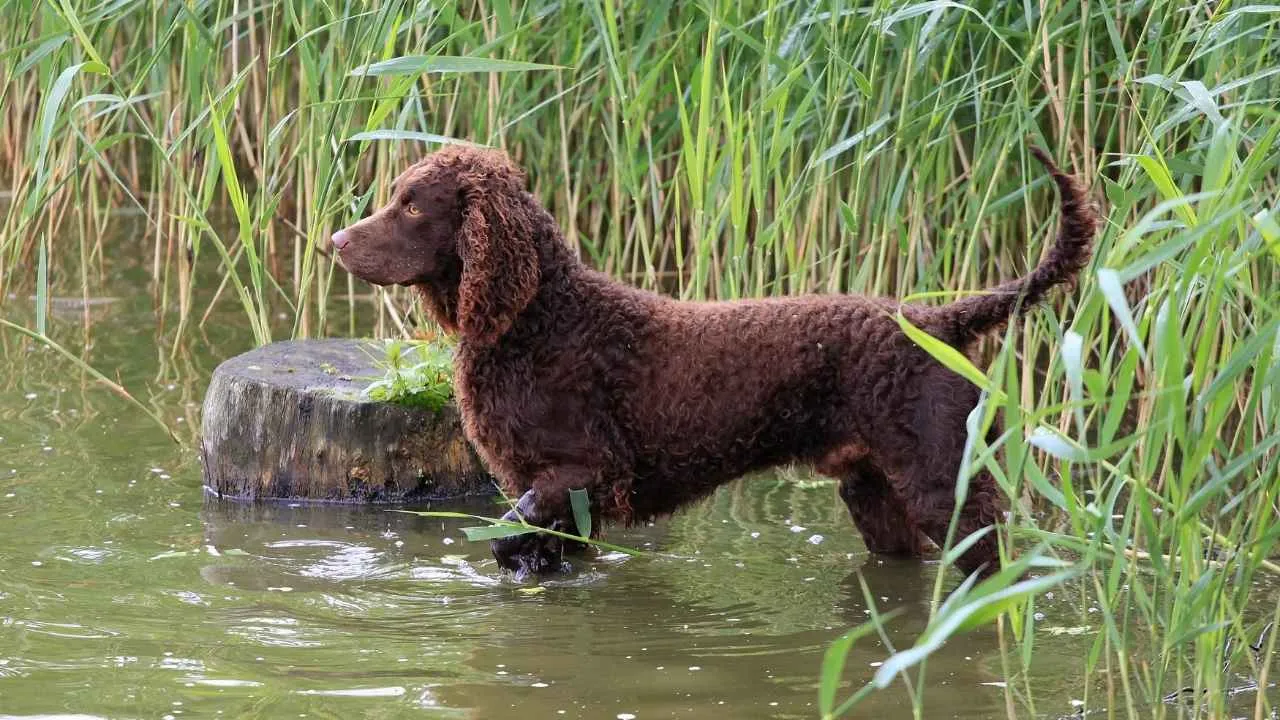
Key Roles: Developed in the U.S. to retrieve game from boats in the cold waters of the Great Lakes and to hunt small game on land.
American Water Spaniels are all about versatility. They’re compact and strong, with a dense, curly coat that resists cold and damp, perfect for long days retrieving ducks from icy lakes. Their origins make them instinctively comfortable around water, whether they’re wading or swimming.
Despite their hunting background, AWS dogs have a cheerful, even-tempered personality that makes them a good fit for households. They can be vocal and will alert to unusual sounds, but they’re not naturally high-strung. With a bit of daily activity, they settle in comfortably.
These dogs have a funny habit of carrying things around in their mouths, shoes, toys, or even a towel if left unattended. This is a leftover trait from their retrieving roots and is easily redirected with interactive play, especially games that involve water or floating toys.
Their thick coat makes regular grooming important, but the breed’s affinity for water helps during bath time. They’re usually relaxed as long as they’re not rushed, and many will respond well to a slow introduction paired with positive reinforcement.
Because of their sharp nose and clever instincts, American Water Spaniels do well with scent games, puzzle toys, and basic obedience work. They’re happiest when they can both think and move, and they appreciate time outdoors with their people.
3. Irish Water Spaniel
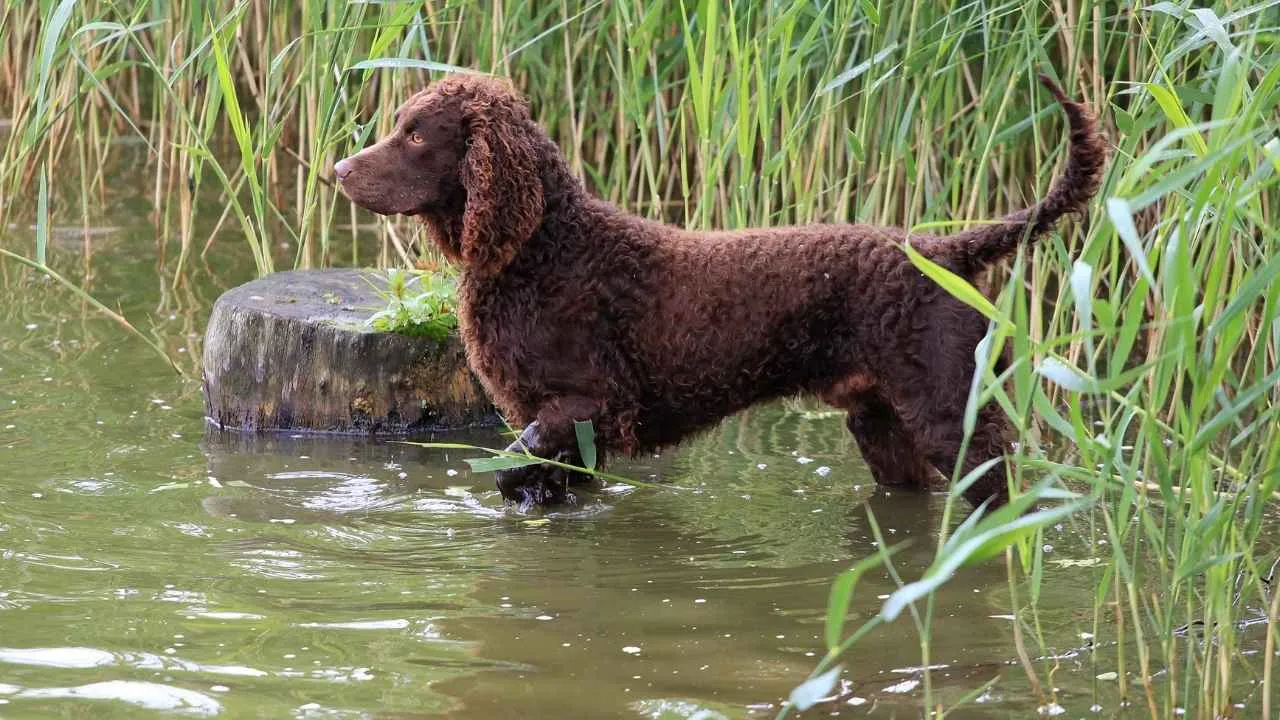
Key Roles: Bred in 19th-century Ireland for retrieving waterfowl in wetlands, marshes, and lakes, valued for their endurance and cold-weather resilience, as stated by Britannica.
There’s no mistaking the Irish Water Spaniel; its topknot of curls, long ears, and tapering tail give it a distinct look. But it’s not just appearance that sets them apart. These dogs were designed for efficiency in wet environments and can navigate choppy waters with ease.
They bring a lot of bounce to the backyard and enjoy romping with other dogs or kids. While playful, they’re also known for being perceptive and attuned to their environment, which makes them quick to notice changes or respond to commands during outdoor play.
Some Irish Water Spaniels develop a quirky sense of humor; they’ll steal socks, carry odd objects, or create games on the fly. This playfulness can be channeled into useful skills like retrieval or scent work, especially if it involves water or challenges.
Their dense, curly coat requires maintenance, but they typically don’t object to getting wet. In fact, bath time often feels familiar, especially when warm water mimics the ponds and rivers they instinctively gravitate toward.
Irish Water Spaniels tend to bond deeply with their families and can be reserved with strangers. They need gentle, consistent training from a young age and thrive in households where exercise, mental stimulation, and affection are part of the daily routine.
4. Chesapeake Bay Retriever
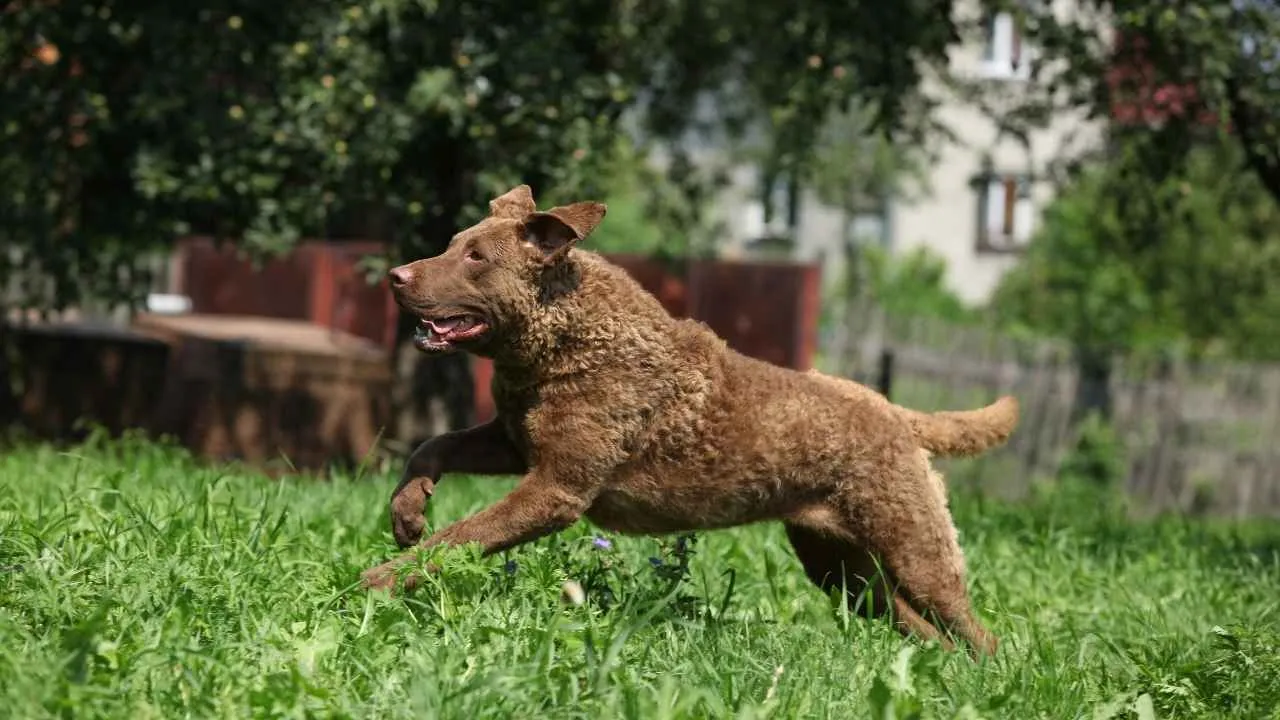
Key Roles: Bred along Maryland’s Chesapeake Bay for retrieving ducks in freezing water and enduring harsh wind and cold for long hunting sessions.
The Chesapeake Bay Retriever is built like a tank but moves with quiet determination. Their thick, oily coat sheds water easily and keeps them warm in sub-zero temperatures, making them ideal for cold-weather retrieval and wetland work.
These dogs don’t splash for fun; they swim with purpose. Whether they’re diving for a toy or crossing a pond, it’s all about focus and efficiency. This trait can be seen during bath time, too, where they remain calm and cooperative when the process is handled with patience.
Chesapeakes form strong attachments to their families and often act as low-key protectors. They’re alert but not excitable, and their confident demeanor means they won’t react impulsively in new situations. They’re often quiet observers until it’s time to engage.
When mentally stimulated, they become eager learners. Training sessions that involve problem-solving, scent trails, or tracking games bring out their best. Their strength and drive make them a good match for experienced owners or those looking to work closely with their dog.

They’re not heavy shedders year-round, but seasonal coat changes mean regular brushing is needed. Thankfully, their tolerance of water and grooming routines makes coat care relatively easy for a working dog of this caliber.
5. Labrador Retriever
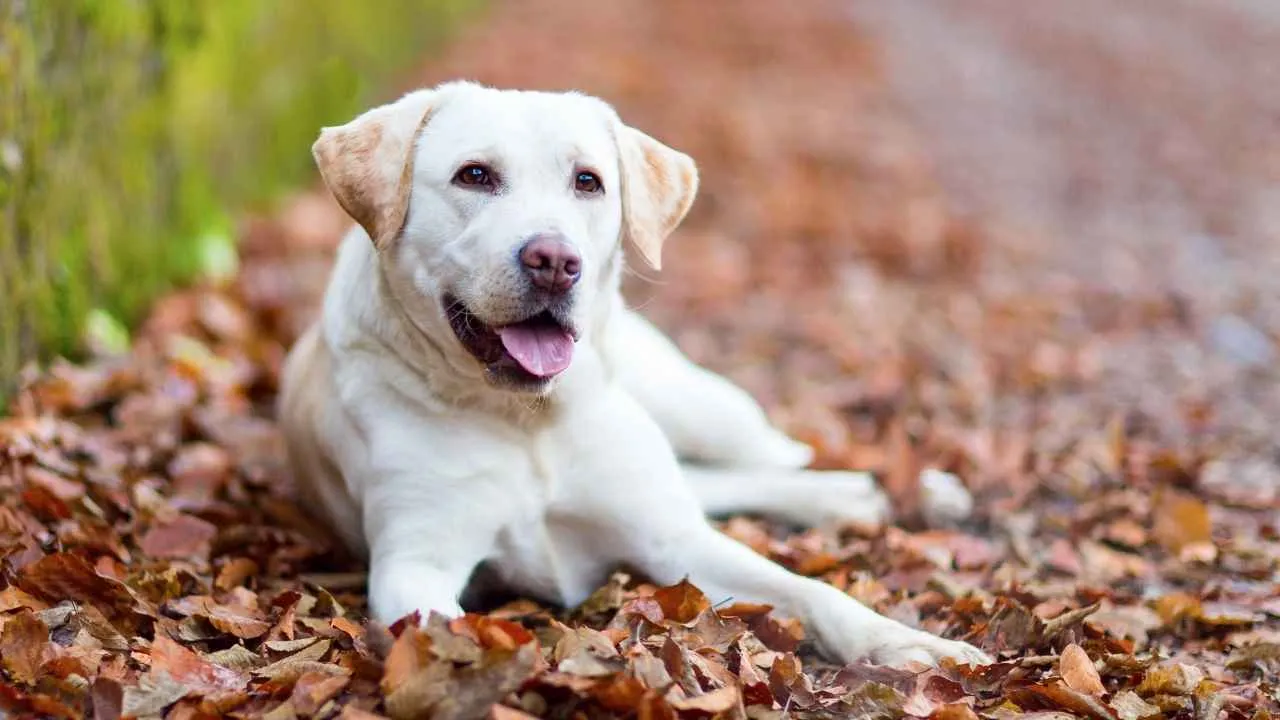
Key Roles: Originally bred in Newfoundland to retrieve fish and nets, later refined in England as waterfowl retrievers and versatile field dogs.
Labrador Retrievers are athletic and cheerful, with a build made for action. Their short double coat repels water, and their famously strong “otter tail” helps them steer as they swim. These traits make them comfortable around water and tolerant, if not enthusiastic, about bath time.
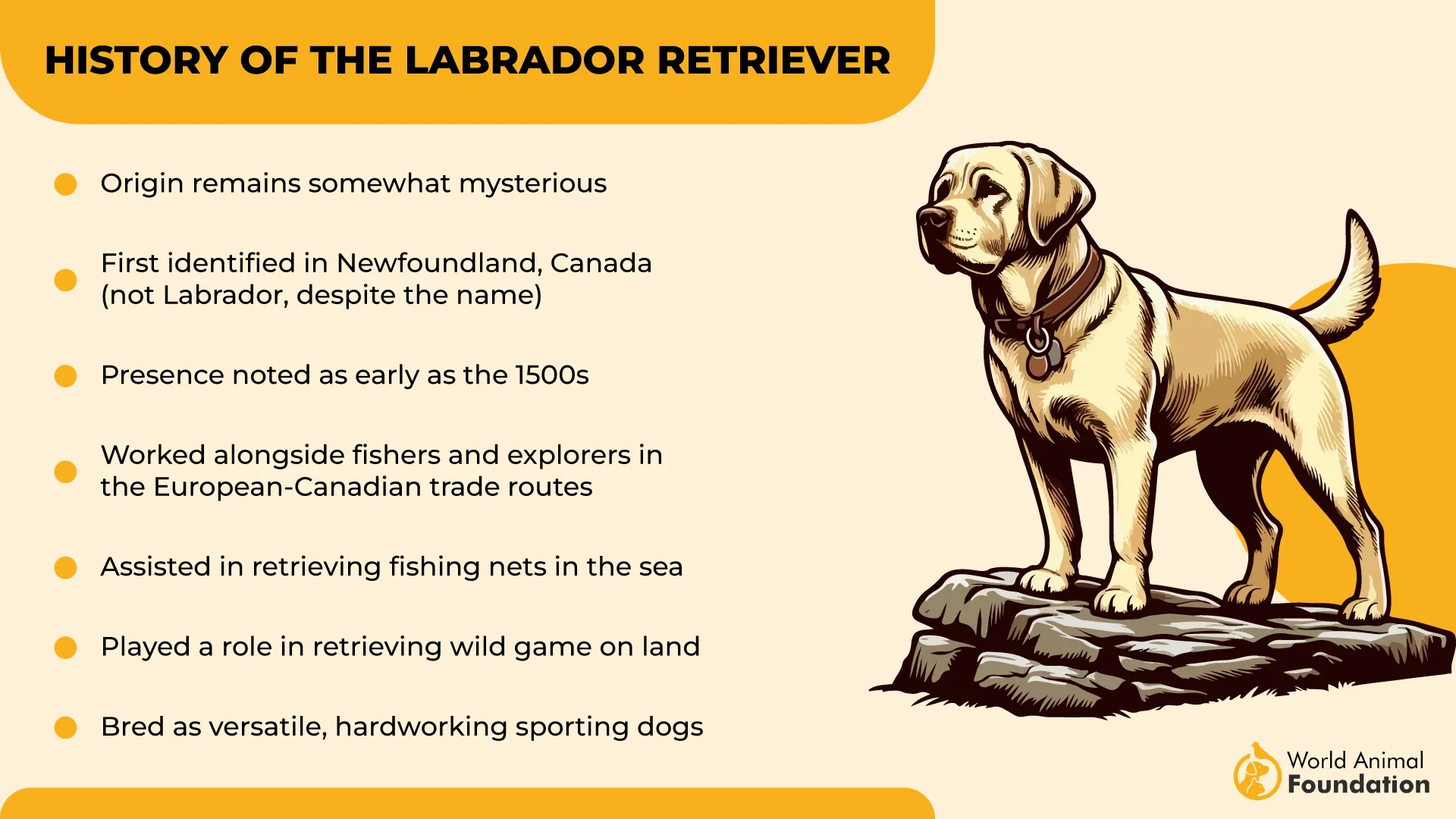
Labs often approach bathing the same way they do everything else: with a wagging tail and easygoing attitude. If introduced positively, most will stand patiently and even enjoy the rinse, especially after a day outdoors.
Though friendly to a fault, Labs aren’t pushovers. They can be highly driven, especially when there’s a job to do or a scent to follow. As per WebMD, they’re excellent at search tasks, water retrieves, and dog sports that mix obedience with physical activity.
Mental stimulation is just as important as physical exercise. They thrive with puzzle feeders, retrieving games, or nose work. Without it, their intelligence and energy can turn into mischief or restlessness.
Labs shed consistently year-round and blow their coats seasonally. Regular brushing and occasional baths, especially after muddy play or swimming, help keep their coat healthy and your home cleaner.
6. Nova Scotia Duck Tolling Retriever
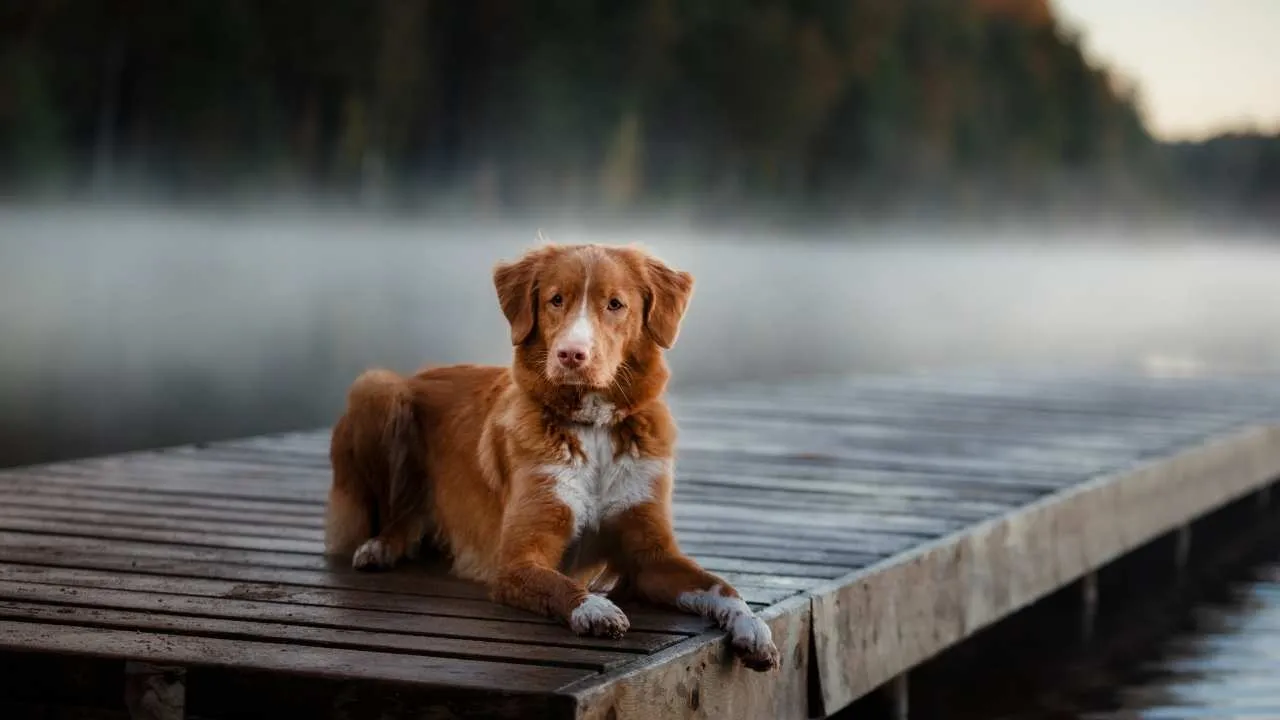
Key Roles: Developed in Nova Scotia to lure and retrieve waterfowl by mimicking playful movement near shorelines, “tolling” ducks into range.
The Toller may be the smallest retriever, but it packs impressive intensity. Agile and compact, it’s built for cold water with a thick, water-resistant coat and webbed feet. These dogs are natural swimmers who won’t think twice about diving into a chilly lake or a bathtub.
While not every Toller adores bath time, they usually tolerate it well if engaged gently. Offering them tasks, like stepping in the tub on cue, can turn the process into a game, which this playful breed appreciates.
They’re bright, curious, and often vocal. You’ll hear their distinctive, high-pitched bark during play or excitement. This alertness makes them excellent watchdogs without being aggressive or pushy.
Their high drive means they aren’t ideal for idle households. Tollers crave activity, retrieving games, dock diving, and scent work. They shine when they’re working closely with their humans.
Coat care is moderate. A couple of thorough brushes a week keep shedding manageable. Pay special attention during seasonal molts. Because they dry off quickly, they’re low-maintenance post-bath, just towel off and they’re good to go.
7. Braque Francais
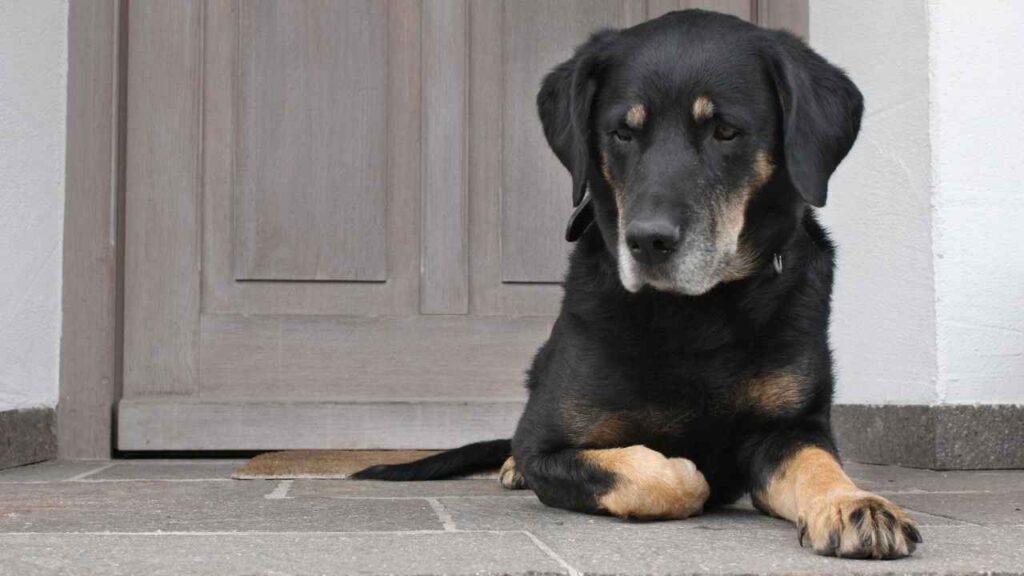
Key Roles: A versatile gun dog from France, the Braque Francais is valued for its natural hunting ability, trainability, and cooperative nature. It’s skilled at pointing and retrieving, adapting well to both fieldwork and home life.
With a lean frame and short, low-maintenance coat, this breed is easy to care for. Many Braque Francais enjoy bath time, especially when it involves warm water and gentle handling. Their relaxed temperament helps make grooming a stress-free experience.
They’re affectionate, steady, and love being close to their people. This bond makes bathing and grooming more about connection than compliance. When introduced early, they often grow to enjoy it as a comforting routine.
The Braque Francais is a great match for someone wanting a loyal, easygoing companion with moderate energy. While bred for the outdoors, they’re calm indoors if given regular activity. Their balanced nature suits both hunters and families.
They enjoy moderate tasks like scent work or light jogs, and they train easily thanks to their willingness to please. Bathing is rarely a struggle—they often relax into the process, especially if it’s consistent and calm.
Their coat requires just occasional brushing, and baths are simple due to its short length. Use gentle shampoos to preserve skin health. Check ears regularly, as their floppy design can trap moisture.
8. Newfoundland
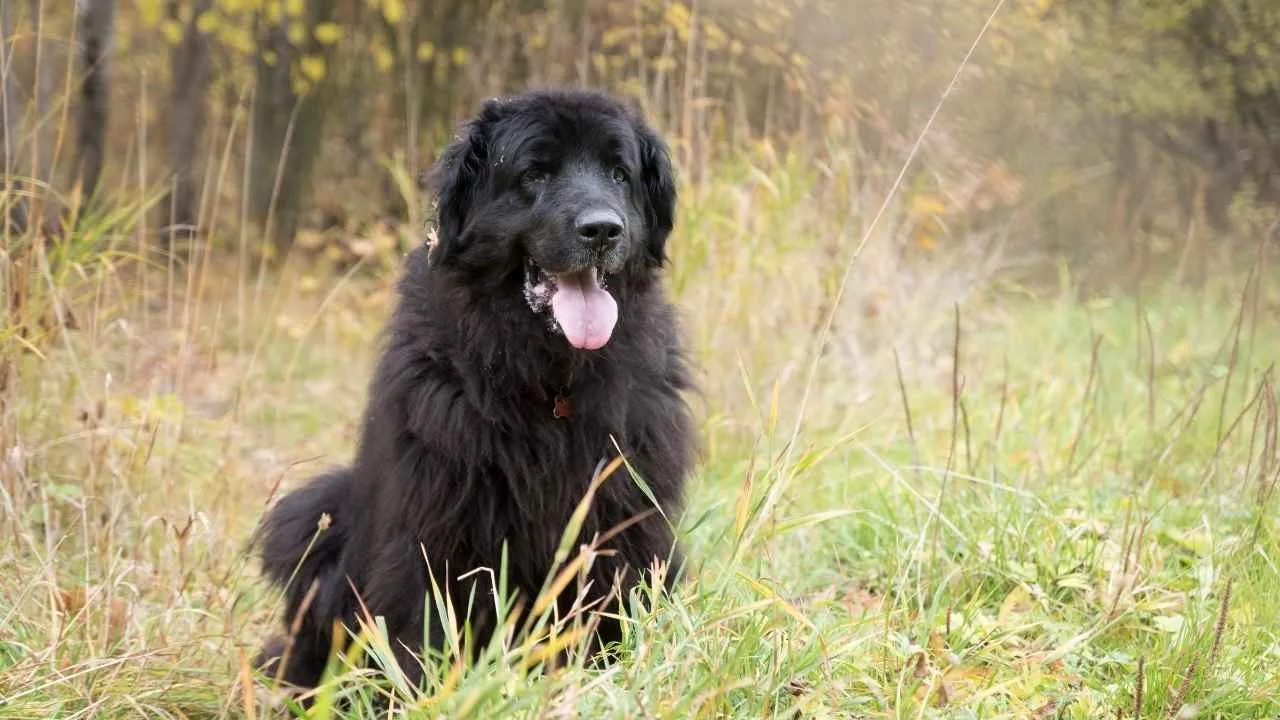
Key Roles: Bred in Canada to haul fishing nets, carry gear, and rescue drowning sailors in icy Atlantic waters, natural lifesavers with strength and heart.
Newfoundlands are massive but mild. Their deep chest, wide paws, and thick, oily coat allow them to move through water with power and surprising grace. Their instinct to help kicks in whether someone’s swimming or struggling in the tub. Most will stand quietly during baths, especially with familiar hands and steady reassurance.
Despite their size, Newfoundlands are gentle and surprisingly sensitive. They notice tone, body language, and respond best to quiet confidence. Grooming rituals can become a bonding routine when approached with patience and calm energy.
They need space and structure. While they’re not hyperactive, they do require regular walks and swims to stay fit. Left idle too long, they grow bored, and their size means boredom can lead to damage. A low-energy dog doesn’t mean low responsibility.
Their coat sheds steadily and blows seasonally. Brushing several times a week is a must, not just to reduce hair but to prevent painful mats. During bath time, a water-resistant coat can make rinsing tricky; multiple passes may be needed to get shampoo out.
9. Lagotto Romagnolo
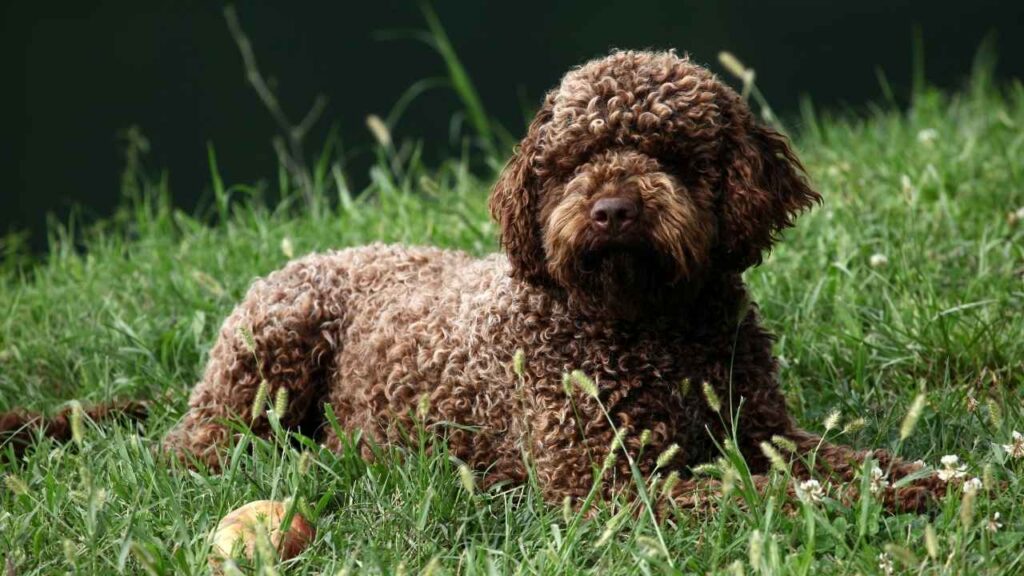
Key Roles: Developed in Italy as a water retriever turned truffle hunter—valued for keen scent work, intelligence, and work ethic in swampy terrain.
Lagottos are built for agility and purpose. Their dense, curly coat keeps them warm and dry even when wading through wet fields. Those same curls need upkeep, but many Lagottos adapt well to bath time, especially when handled with consistent cues and calm direction.
This breed is sharp and sensitive. They’re deeply aware of their environment and handler’s mood, which makes them highly trainable, but also easily overwhelmed if rushed. Grooming, including bathing, works best when broken into steps they can predict and follow.
Mentally, they’re wired to problem-solve. Give them scent puzzles, agility tasks, or a small job, and they’re in their element. Physical exercise alone won’t tire them out; they need brain work as much as play.
Digging is a natural behavior, not a nuisance. These dogs were bred to hunt underground, after all. Redirect the urge with sanctioned digging spots or scent-based games to avoid backyard craters.
Their coat is low-shedding but high-maintenance. It mats easily if neglected. A metal comb, frequent trims, and occasional baths with curl-safe shampoo keep the coat healthy. Water doesn’t bother them, but drying those curls properly takes time.
Conclusion
For some dogs, bath time is more than just a hygiene routine; it’s a chance to unwind, receive attention, and bond closely with their humans. Whether it’s the soothing warm water, the gentle combing of a silky or medium-length coat, or simply the pleasure of being doted on, certain breeds seem genuinely content in the tub.
Many of these dogs, especially those with short coats or a history as strong swimmers, take to regular baths with a positive attitude. Their floppy ears and sensitive skin might require extra attention, but they often stand calmly, making them great bath buddies.
Regular maintenance, like cleaning, brushing, and drying, becomes less of a chore and more of a shared moment. For these breeds, the routine of wash and rinse becomes a familiar rhythm that brings comfort and closeness.
Every dog is unique, of course, but when a pup enjoys bath time, it transforms the experience into something both practical and affectionate. Afterward, there’s nothing quite like a fresh, happy dog curled up beside you, clean, relaxed, and ready for the next adventure.


